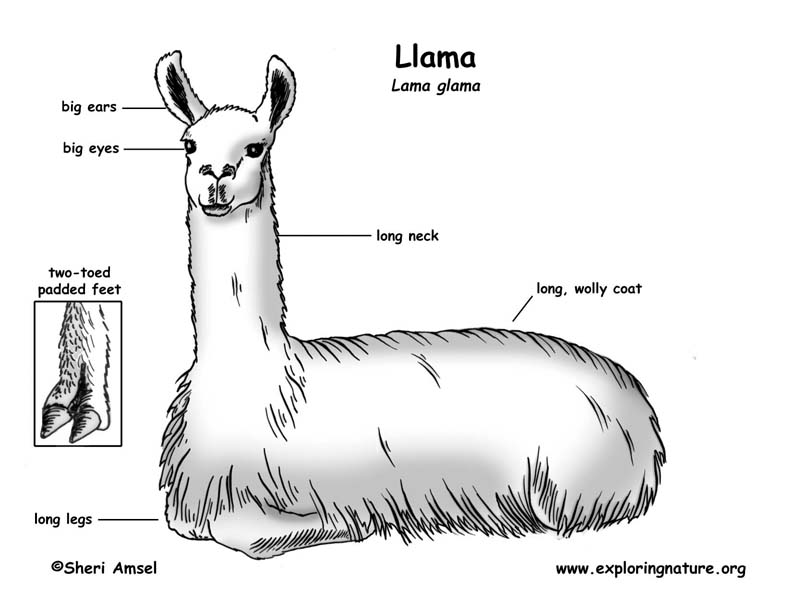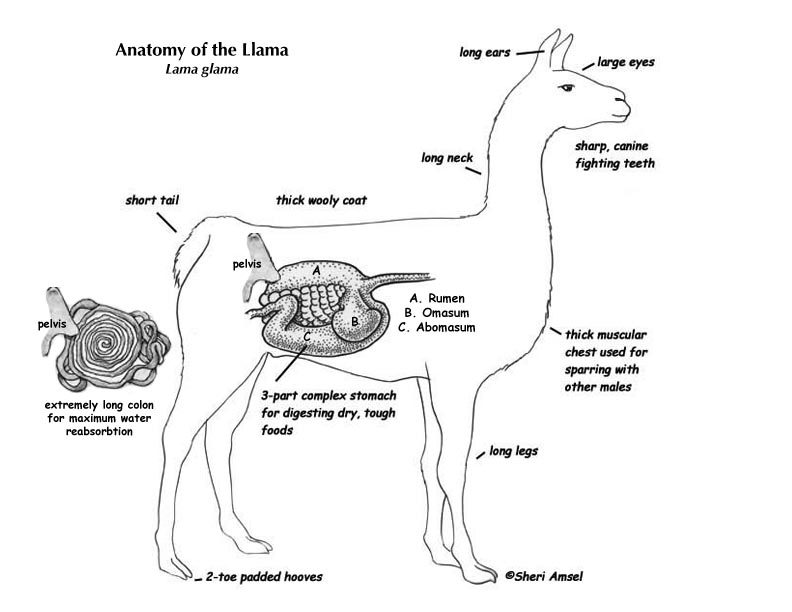

A female llama is called a dam. A male llama is called a male, gelding or sire. A baby llama is called a cria.
Llamas are very territorial so are often used to protect flocks of sheep. They will drive off dogs or coyotes with a forceful chest thrust or biting with their sharp canines. They have a loud alarm call too, which can inform farmers when predators are nearing their flocks. If alarmed or angry, they lay their ears back and spit cud. When they see something familiar, like a bucket of food coming their way, they actually may hum. They are curious by nature and will “nose” things that interest them, including people.
They have long necks and large ears and eyes. This has served them well for watching out for predators. They can weigh more than 400 pounds and reach 6 feet tall. They have split-hooved feet and can be any color from white to black, solid colored or spotted. They have sharp canine teeth that llama owners often file off to prevent injuries during male dominance scuffles in a herd.
Llamas are herbivores, eating only plant matter. They are ruminants. This means that they can eat dry grasses and digest it with the help of a 3-part stomach. Microorganisms (bacteria and protozoa) in the stomach help break down the dry parts of the grass (cellulose). Then the llama spits up or "regurgitates" the food back into the mouth and chews it again. This is called chewing their “cud” and further helps to break down the tough grass.
Llamas give us wool and meat and are used for carrying burdens from place to place.


